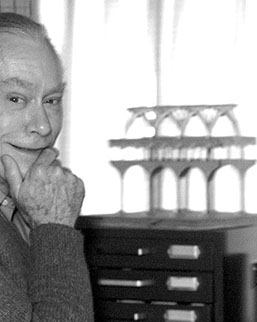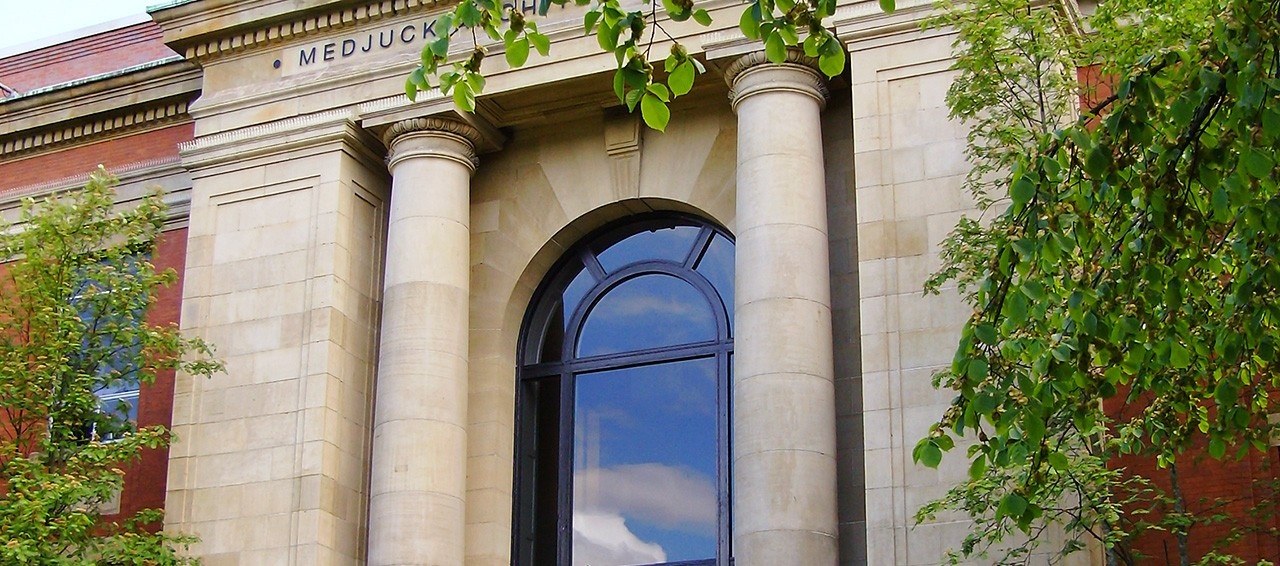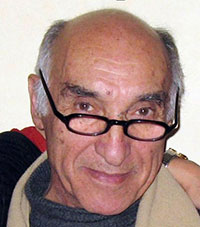In Memoriam
 ��
��
Dr. J. Philip McAleer (1935–2024)
J. Philip McAleer was a professor of architectural history at the School of Architecture from 1971 to 2000. During the school's development, this included nine years at Nova Scotia Technical College, seventeen years at the Technical University of Nova Scotia, and three years at ����91��Ƶ University.
Philip's education included an AB from Columbia University (1956) and an MFA from Princeton University. He completed his PhD at the University of London in 1963 with a dissertation on the Romanesque church facade in Britain. This was published in 1984 as one of the outstanding theses from the Courtauld Institute of Art.
Before coming to Halifax, Philip taught at Columbia University, University of California at Irvine, and Mount Holyoke College. At the Technical University of Nova Scotia, he taught Survey of Western Architecture 1 and Survey of Western Architecture 2 to incoming architecture students, illustrated by his prolific slide collection. For senior students, his Buildings in Perspective course was a term-long, in-depth, collective analysis of a single historical building.
Philip's research focused on the architectural history of the Medieval Period, with a specialization in British Romanesque and Gothic ecclesiastical architecture, in particular the facade. He also brought that knowledge to studies of two more recent religious buildings in Halifax. His publications included four books:
- The Romanesque Church Facade in Britain (Garland, 1984)
- A Pictorial History of the Basilica of St. Mary, Halifax (Tech Press, 1984)
- A Pictorial History of St. Paul's Anglican Church, Halifax, Nova Scotia (Tuns Press, 1993)
- Rochester Cathedral, 604–1540: An Architectural History (University of Toronto Press, 1999)
He was also an active member of the Society of Architectural Historians and contributed many peer-reviewed articles and book reviews to major North American and British academic journals in architectural and art history.
Dr. Esmail Baniassad (1936–2023)
The Faculty of Architecture and Planning honours the memory of Essy Baniassad. A passionate advocate for architecture, an exceptional thinker and an influential educator, Essy was a citizen of the world who integrated those qualities in his work as an architect and a teacher. He brought exceptional clarity and inspiration to architectural education that has advanced the lives of generations of students, faculty colleagues, practicing architects and peers.
Essy Baniassad was appointed Dean of the Faculty of Architecture at the Technical University of Nova Scotia in 1980. During the next fourteen years he opened that school to the world. Students worked internationally, participated in the design of housing cooperatives in Colombia and assisted in the development of plans for disaster-resistant buildings in Peru. He initiated the ����91��Ƶ-Botswana Architectural Education Project (in collaboration with the Government of Botswana) and between 1992 and 2012 the program graduated 32 students, who are now teaching and practising in Botswana. He then��helped to establish the School of Architecture at the University of Botswana in 2011.
In 1989, Essy Baniassad was elected President of the Royal Architectural Institute of Canada, and during his presidency sought to project architecture, architects and design and to articulate the many benefits they bring to public life.
In 1993, Essy Baniassad founded TUNS Press, the first architectural publishing house in Canada. The Press publishes monographs of Canadian architects, books on Canadian architectural history, and works that bring architecture to a wider public. In 2011, TUNS Press became ����91��Ƶ Architectural Press and Essy Baniassad continued to serve on the Editorial Board until 2023.��������
In 2000, Essy Baniassad was appointed Chair of the Department of Architecture at the Chinese University of Hong Kong. During the six years that he held that post, the architecture program was advanced significantly while his research focused on collaborations with the Hong Kong Hospital Authority to re-envision hospitals as civic institutions.��
In all his activities, Dr. Baniassad understood the power of architecture to inspire communities in constant change. His understanding of a shared humanity and a shared planet resonated with people far and wide. He will be greatly missed by communities in Nova Scotia, across Canada and around the world. We are especially thankful for his time and inspiration.��
Brian Carter and Christine Macy
In the , Brian MacKay-Lyons pays tribute to Essy Baniassad.



